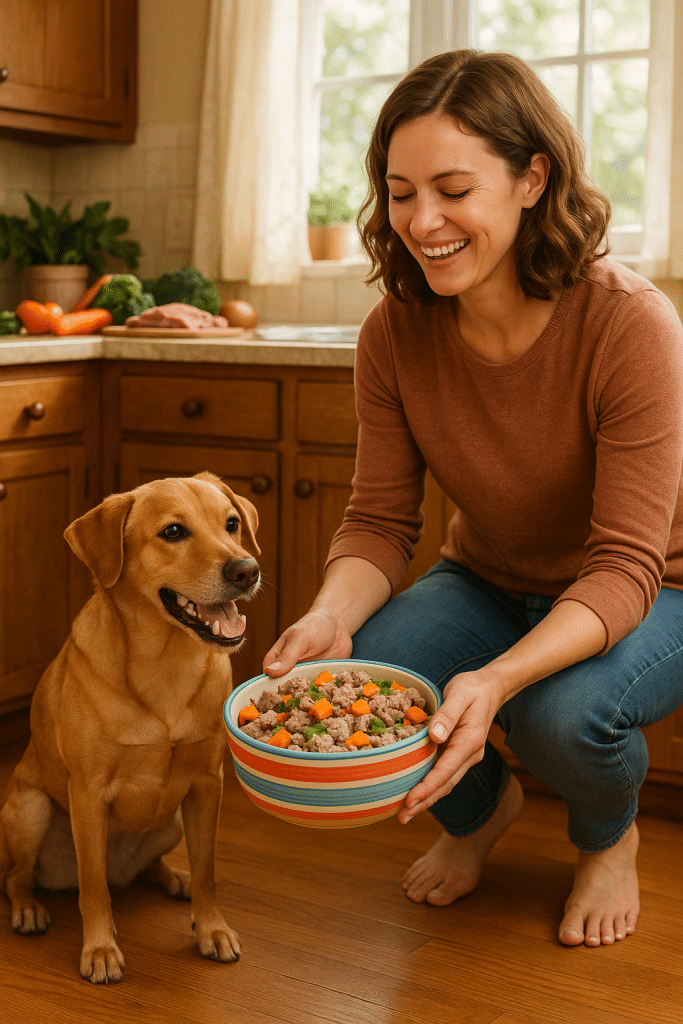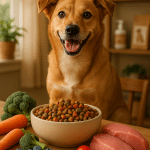When it comes to feeding our loyal companions, the choices we make ahead of their bowl can mean everything. Homemade dog food recipes have surged in popularity among pet owners who want to provide nutritious, balanced meals tailored specifically to their dog’s unique needs. After all, nothing beats knowing exactly what’s going into your pet’s dish. Whether you’re a seasoned chef or a beginner looking for vet-approved homemade dog food recipes, this comprehensive guide is created with you in mind. You’ll find detailed recipes spanning from beef stews to fish and quinoa mixes, plus essential canine nutrition insights, cooking tips, food safety advice, and guidance on balancing homemade and commercial meals.
Crafting homemade meals can feel like a rewarding but daunting task. So, I’ll walk you through not only the best recipes but also what ingredients are necessary, how to prepare them safely, and how to cater to sensitive stomachs and allergies. Let’s ensure your furry friend thrives on wholesome, natural food that supports their long-term health and happiness. Ready? Let’s dive right into these seven homemade dog food recipes designed to nourish and delight.
Understanding Canine Nutrition: The Basics of Balanced Homemade Dog Food
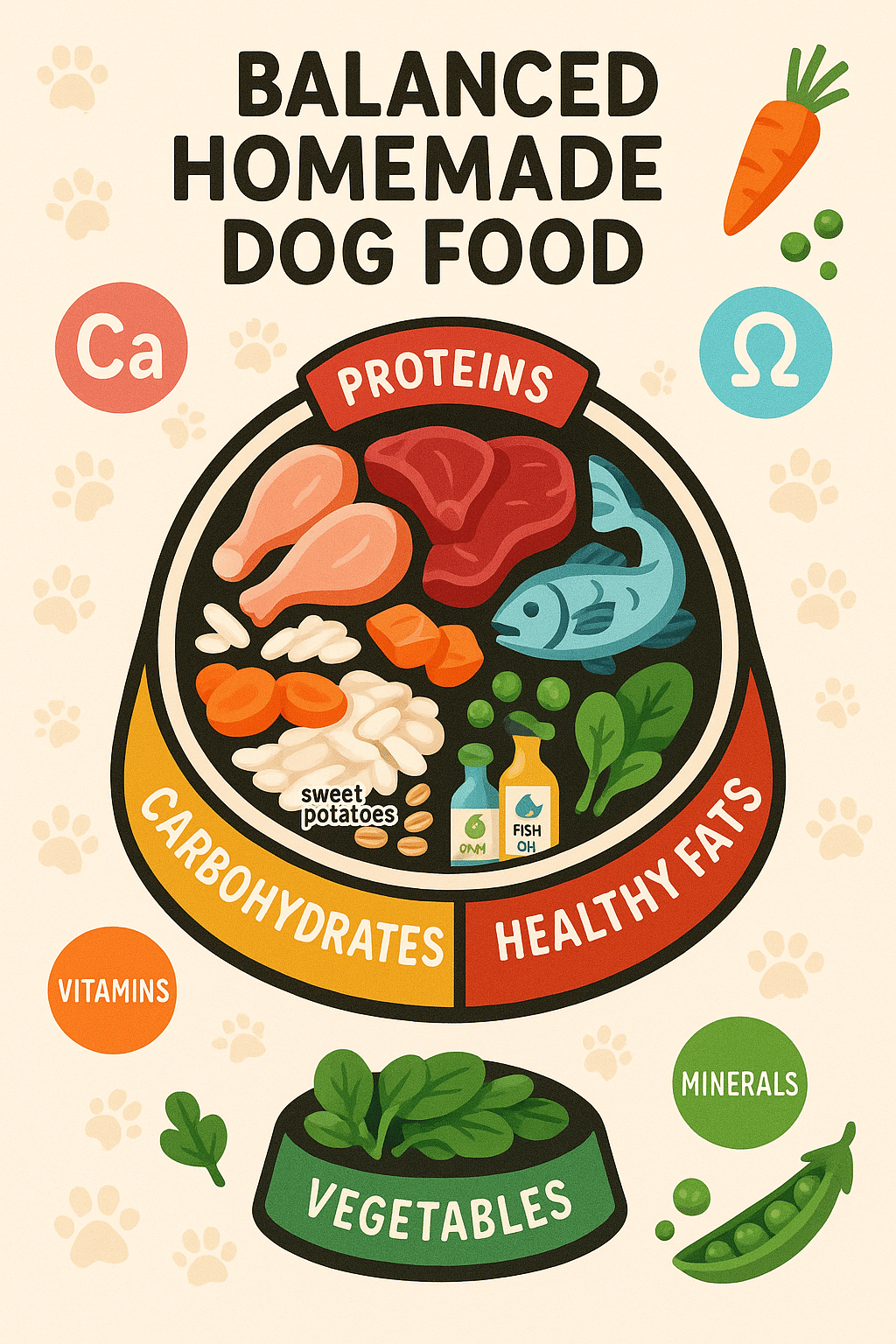
To make your own dog food confidently, it’s critical to understand what a balanced canine diet entails. Dogs require a specific blend of nutrients to maintain energy, support bodily functions, and stay healthy — and homemade recipes must reflect that carefully.
Essential Nutrients Your Dog Needs
Dogs need a combination of macronutrients and micronutrients for optimal health:
- Proteins: The building blocks for muscles, enzymes, hormones, and immune support.
- Fats: Necessary for energy, healthy skin and coat, and vitamin absorption.
- Carbohydrates: Provide quick energy and fiber for digestive health.
- Vitamins and Minerals: Support bone health, immune function, and overall metabolism.
Vitamins such as A, D, E, and B complex, and minerals like calcium, phosphorus, and zinc are vital. Lack of any key nutrient could lead to health problems over time, so recipes should be thoughtfully formulated or supplemented.
Protein Sources: Beef, Turkey, Chicken, Fish, and Lamb
Protein plays a starring role in canine diets. The source influences digestibility and allergen potential:
- Beef: A rich source of iron and essential amino acids. Many dogs enjoy its robust flavor.
- Turkey: Leaner than beef, turkey provides quality protein with fewer calories.
- Chicken: Highly digestible and widely accepted by dogs.
- Fish (e.g., salmon): Excellent for omega-3 fatty acids promoting skin and coat health.
- Lamb: Often recommended for dogs with allergies due to its distinctive protein profile.
Each protein source can be the centerpiece of homemade recipes. For example, Blue Buffalo’s Homestyle Recipe Beef Stew inspired recipes highlight the benefits of using real beef and vegetables.
The Role of Superfoods: Pumpkin, Sweet Potato, Spinach
Superfoods like pumpkin, sweet potato, and spinach add fiber, antioxidants, and crucial vitamins:
- Pumpkin: Great for digestive health due to fiber, supports soothing upset stomachs.
- Sweet Potato: A powerhouse of fiber, vitamins A and C, and potassium; also supports weight management.
- Spinach: Loaded with iron and antioxidants, enhances immunity.
Integrating these ingredients into meals enhances nutrient density. Wellness CORE’s Grain-Free Turkey & Sweet Potato recipe combines these elements expertly for balanced nutrition.
Grain-Free vs. Grain-Inclusive Recipes: Choosing What’s Best
The grain debate often leaves owners puzzled. Some dogs thrive on grain-free diets due to allergies or sensitivities, while others digest grains like brown rice and oats without issues.
Grain-Free: Removes common allergens such as corn, wheat, and soy. Ideal for dogs with digestive issues or allergies.
Grain-Inclusive: Provides beneficial carbohydrates and fiber. Brown rice, for instance, is a gentle carbohydrate source used in Nutro’s Lamb & Rice Recipe.
Selecting the right approach depends on your dog’s health, sensitivities, and preferences.
How to Safely Prepare Homemade Dog Food
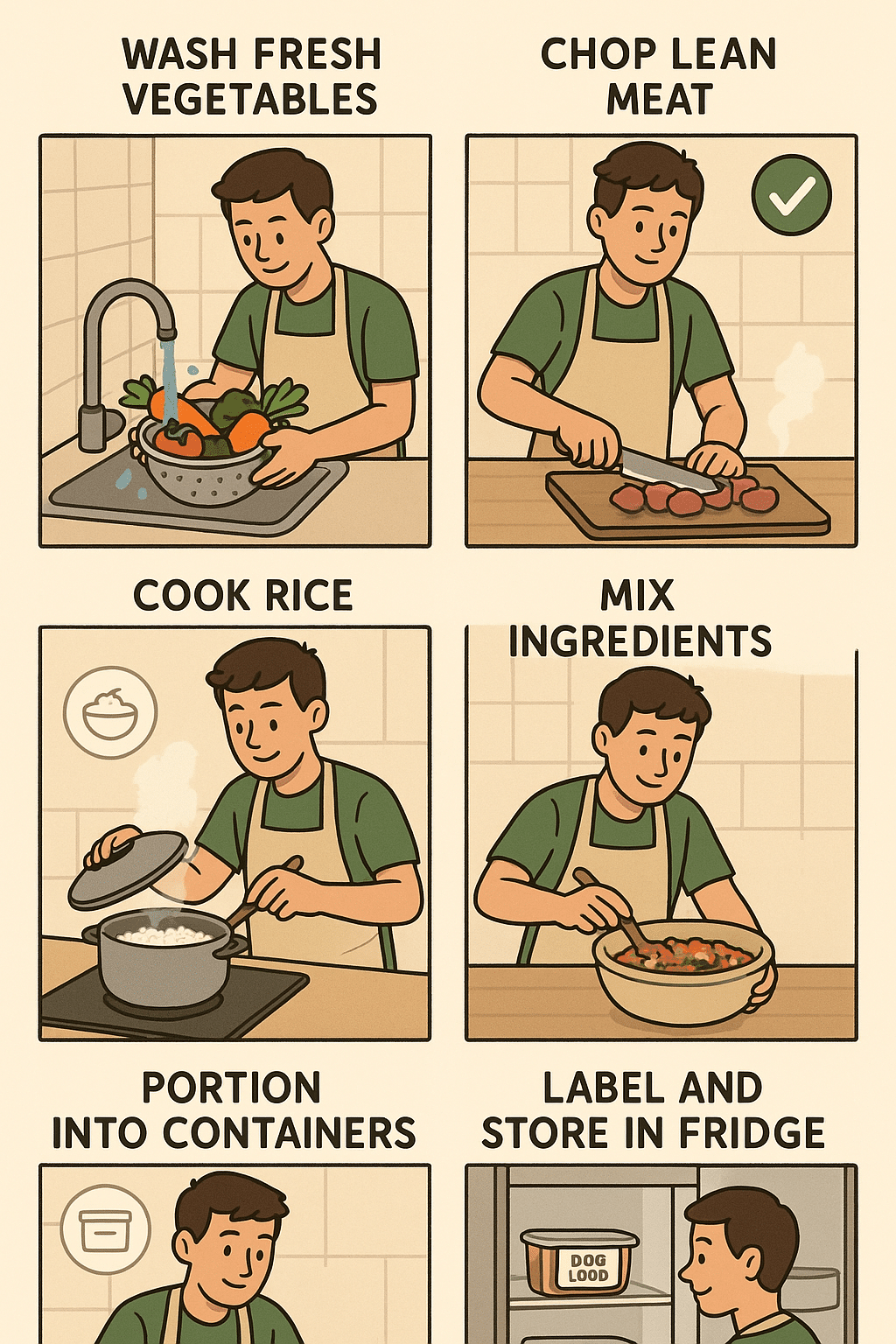
Making homemade dog food isn’t just about ingredients; safety in preparation is crucial to prevent nutritional gaps or foodborne illnesses.
Cooking Methods: Slow Cooker, Boiling, and Baking
Each cooking method has pros and cons:
- Slow Cooker: Ideal for making stews or hearty meals, it gently cooks ingredients over hours, preserving nutrients and flavors. Recipes like the Beef and Sweet Potato Stew use this method effectively.
- Boiling: Great for lean meats and vegetables, boiling helps eliminate bacteria but can leach out some nutrients into the water, which can be incorporated into the recipe if served.
- Baking: Useful for treats and certain recipes, it allows flavor concentration but may dry out some ingredients if overcooked.
Choosing the right method depends on the recipe and ingredient type, but always cook meats thoroughly to kill pathogens.
Importance of Portion Control and Serving Sizes
Overfeeding or underfeeding can lead to obesity or malnutrition. Portion size should take into account your dog’s weight, age, activity level, and health status.
As a general guideline, dogs require about 2-3% of their body weight in food daily, split into two meals. For example, a 50-pound adult dog generally consumes about 1 to 1.5 pounds of food daily.
Consult your veterinarian or use feeding charts on commercial dog foods as benchmarks, adjusting homemade recipes accordingly.
Ingredient Safety and Avoiding Common Toxins
Some human foods are toxic to dogs, including onions, garlic, grapes, raisins, chocolate, xylitol, and macadamia nuts. Always avoid these in any homemade preparation.
Additionally, large amounts of salt, sugar, or artificial preservatives should be excluded. Use natural herbs and spices carefully — parsley and turmeric are generally safe, but always check first.
Ensuring freshness by purchasing quality ingredients, washing vegetables, and storing prepared food properly is fundamental for your dog’s wellbeing.
7 Best Homemade Dog Food Recipes
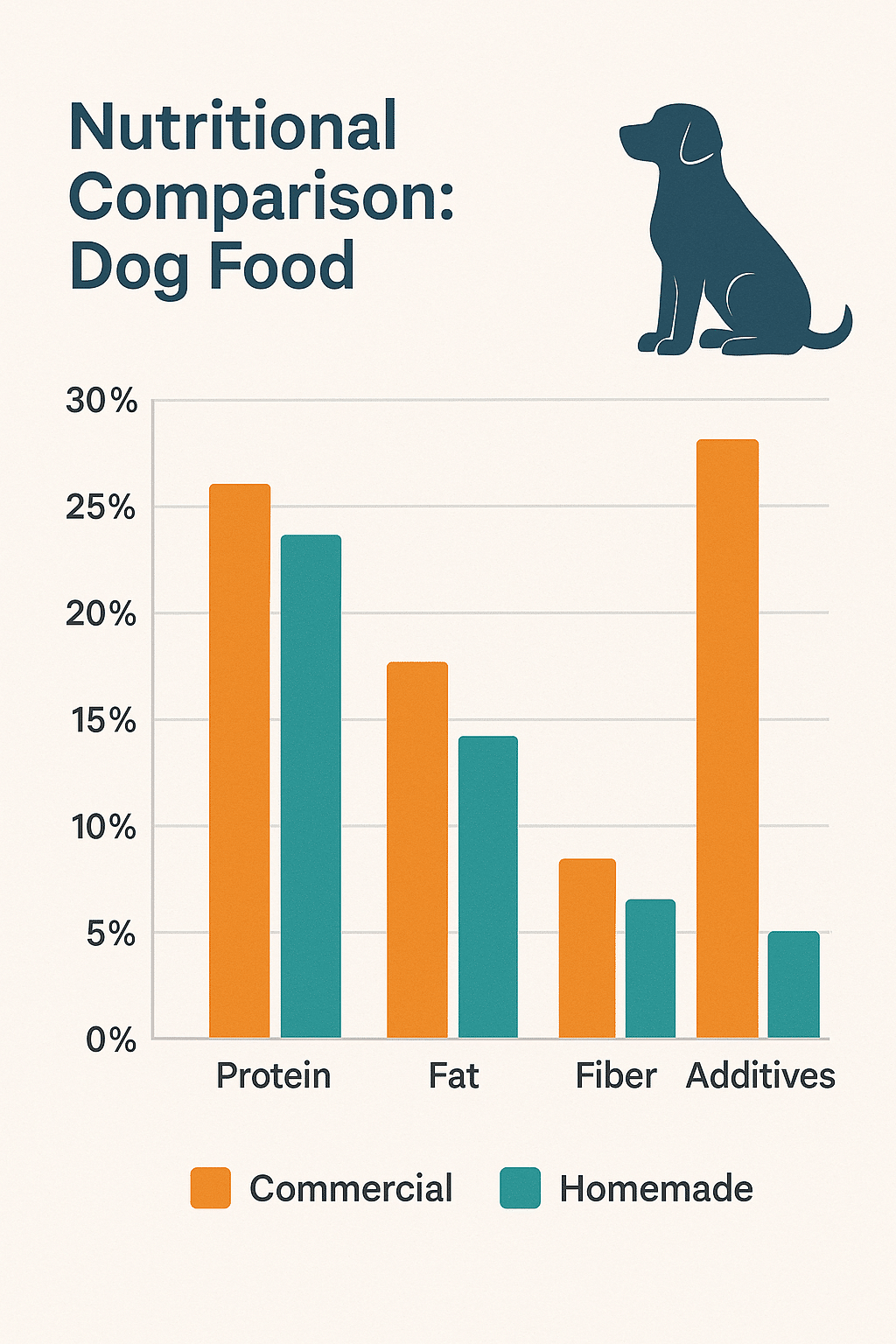
Let’s get to the heart of the matter: nutritious, balanced homemade dog food recipes based on leading commercial formulas from reputable brands.
1. Beef and Sweet Potato Stew: Nutritious and Easy to Prepare
Inspired by Blue Buffalo’s Homestyle Recipe Beef Stew.
Ingredients:
- 2 pounds lean ground beef
- 1 cup sweet potato, peeled and cubed
- 1/2 cup peas
- 1/2 cup carrots, diced
- 1/2 cup green beans, chopped
- 1/2 cup low sodium beef broth
- 1 tbsp olive oil
Preparation:
- Brown the ground beef in a skillet over medium heat, draining excess fat.
- Add sweet potatoes, peas, carrots, and beans to a slow cooker.
- Pour broth and drizzle olive oil, then add browned beef.
- Cook on low for 6-8 hours until vegetables are tender.
Tips:
Slow cooking preserves nutrients and enhances flavor. Avoid seasoning with salt or onions.
Serving:
Allow to cool before serving. Serve portions equivalent to 2-3% of your dog’s weight.
Storage:
Store leftovers in an airtight container in the refrigerator for up to 3 days or freeze in individual portions for up to 3 months.
Nutrition Fact:
Provides high-quality protein, beta-carotene from sweet potatoes, fiber, vitamins A and C, and antioxidants.
2. Turkey and Sweet Potato Delight: High Protein, Grain-Free
Inspired by Wellness CORE’s Grain-Free Turkey & Sweet Potato Recipe.
Ingredients:
- 2 pounds ground turkey
- 1.5 cups sweet potato, peeled and cubed
- 1 cup peas
- 1/2 cup carrots, sliced
- 1 tbsp fish oil
- 1/4 cup chopped spinach
Preparation:
- In a pot, cook ground turkey thoroughly.
- Steam sweet potatoes, peas, carrots, and spinach until soft.
- Mix vegetables and turkey together in a bowl.
- Stir in fish oil for omega-3 support.
Serving Ideas:
Great for dogs prone to grain allergies or those needing lean protein.
Storage:
Refrigerate in sealed containers for up to 3 days or freeze in smaller portions.
Nutrition Fact:
Rich in protein and omega fatty acids, full of antioxidants and fiber.
3. Chicken and Rice Meal: Gentle on Sensitive Stomachs
Based on insights from Merrick’s Grain-Free Chicken & Rice Recipe.
Ingredients:
- 2 pounds boneless, skinless chicken breast
- 1 cup cooked brown rice
- 1/2 cup peas
- 1/2 cup carrots
- 1 tbsp olive oil
Preparation:
- Boil or bake chicken thoroughly, then chop into bite-sized pieces.
- Cook brown rice according to package instructions.
- Steam peas and carrots until tender.
- Combine all ingredients, drizzle olive oil, and mix well.
Tips:
Perfect for dogs with sensitive digestive systems or recovering from illness.
Storage:
Keep refrigerated for 3-4 days; freeze for longer-term storage.
Nutrition Fact:
Provides lean protein and easily digestible carbs to soothe and nourish.
4. Salmon and Sweet Potato Bowl: Rich in Omega Fatty Acids
Inspired by Natural Balance’s Salmon & Sweet Potato Dog Food.
Ingredients:
- 2 pounds wild-caught salmon fillets (bones removed)
- 1 cup sweet potato, diced
- 1/2 cup green beans
- 1/4 cup blueberries (fresh or frozen)
- 1 tbsp flaxseed oil
Preparation:
- Bake or steam salmon until fully cooked, flake into chunks.
- Steam sweet potatoes and green beans until soft.
- Mix salmon, vegetables, and blueberries in a bowl.
- Add flaxseed oil for additional omega-3s.
Serving:
Muscle-building, skin-boosting recipe ideal for dogs needing healthy fats.
Storage:
Refrigerate for up to 3 days or freeze in portions.
Nutrition Fact:
Salmon provides EPA and DHA omega-3s that help reduce inflammation and promote coat health.
5. Lamb and Rice Stew: Flavorful and Hypoallergenic Option
Elements drawn from Nutro’s Lamb & Rice Recipe.
Ingredients:
- 2 pounds ground lamb
- 1 cup cooked brown rice
- 1/2 cup pumpkin puree
- 1/2 cup peas
- 1 tsp turmeric powder
Preparation:
- Brown lamb and drain excess fat.
- Mix lamb, cooked rice, peas, pumpkin, and turmeric in a pot.
- Warm mixture for 10 minutes until blended.
Tips:
Turmeric helps with inflammation; pumpkin supports digestion.
Storage:
Refrigerate or freeze in suitable portions.
Nutrition Fact:
A high-protein, moderate-fat meal low in common allergens.
6. Puppy-Specific Recipe: Chicken and Spinach Mix
Based on Hill’s Science Diet Puppy Chicken & Spinach formula.
Ingredients:
- 2 pounds ground chicken
- 1 cup cooked quinoa
- 1/2 cup chopped spinach
- 1/2 cup carrots, grated
- 1 tbsp fish oil
Preparation:
- Sauté ground chicken until fully cooked.
- Cook quinoa according to package directions.
- Steam spinach and carrots lightly, then mix all ingredients.
- Add fish oil for brain and coat health.
Feeding Tips:
Supports growth and development with balanced protein, fat, and antioxidants.
Storage:
Consume within 3 days refrigerated.
Nutrition Fact:
Formulated with puppy needs in mind — high protein, DHA, and antioxidants.
7. Fish and Quinoa Mix: Boosting Digestion and Immunity
Drawing inspiration from Taste of the Wild’s Pacific Stream Salmon & Quinoa.
Ingredients:
- 2 pounds white fish fillets (e.g., cod, tilapia)
- 1 cup cooked quinoa
- 1/2 cup sweet potato, diced
- 1/2 cup green peas
- 1 tbsp coconut oil
Preparation:
- Bake or steam fish and flake into pieces.
- Cook quinoa and steam sweet potatoes and peas.
- Combine all ingredients and stir in coconut oil.
Benefits:
Great for digestive health and a strong immune system.
Storage:
Freeze or refrigerate depending on quantity prepared.
Nutrition Fact:
Lean protein with fiber-rich carbs and healthy fats to support overall wellness.
Managing Special Dietary Needs
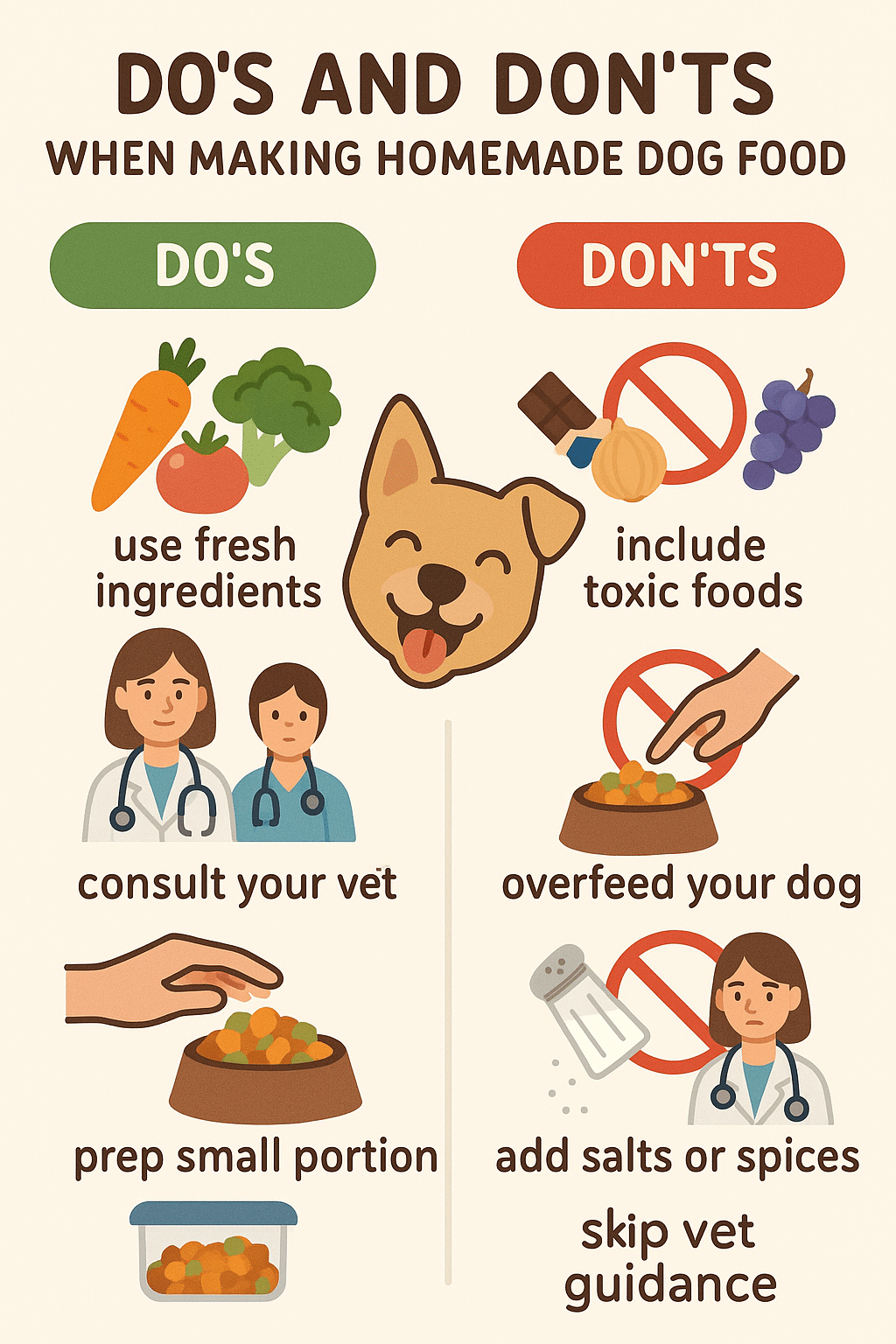
Homemade Dog Food for Sensitive Stomachs and Allergies
If your dog struggles with allergies or digestive sensitivities, recipes excluding grains, common allergens, and using novel proteins such as lamb or fish can reduce reactions. Incorporate easily digestible carbs like sweet potatoes and pumpkin, which soothe the digestive tract.
Grain-Free and Vegan Options for Dogs
Grain-free diets work well for dogs with certain food sensitivities. Vegan homemade dog food recipes are possible but require careful supplementation of protein and nutrients typically found in animal sources. Consulting a veterinary nutritionist is crucial before adopting such diets.
Incorporating Homemade Dog Treats and Snacks
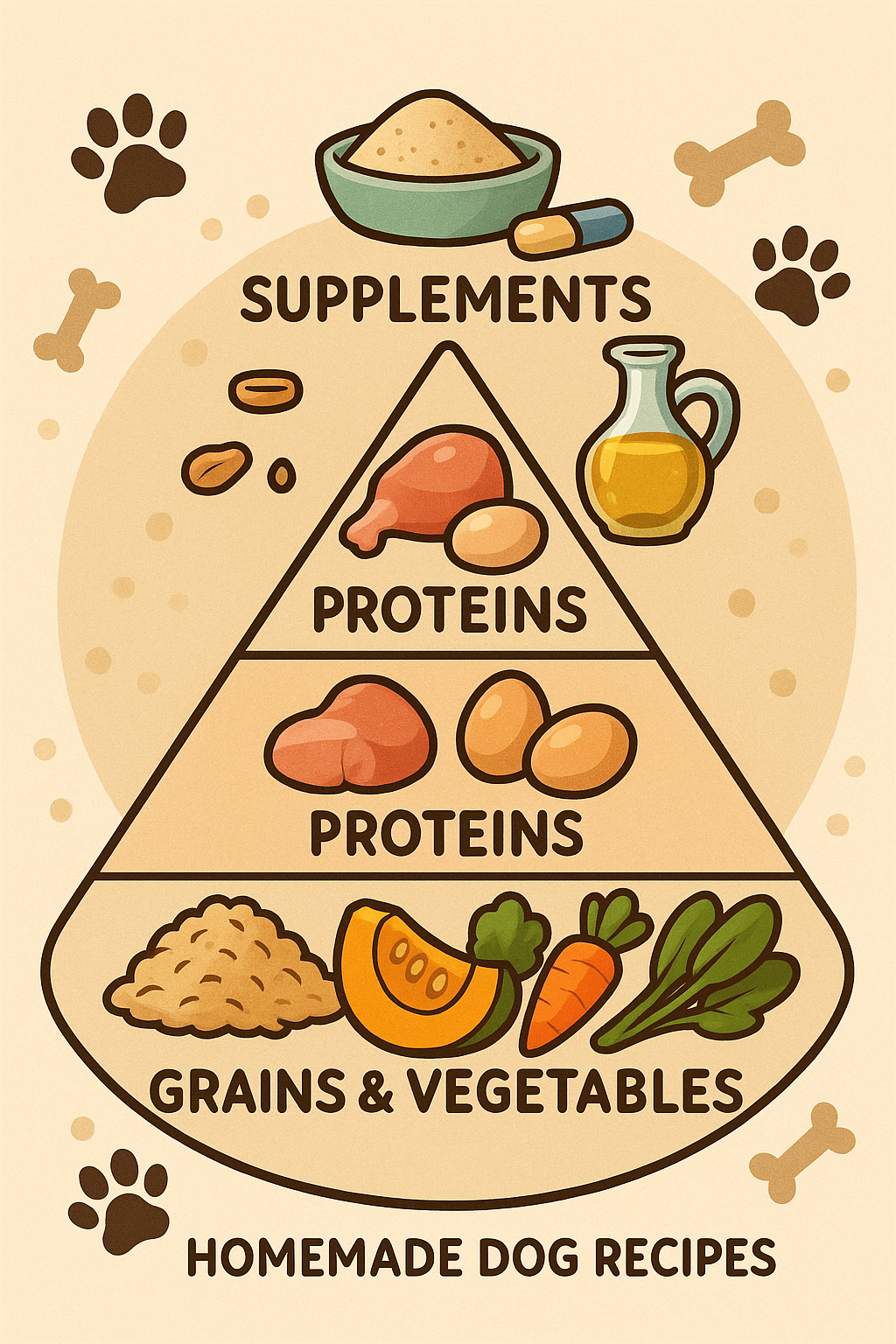
Easy DIY Treats that Complement Your Homemade Meals
To complement meals, homemade treats made with safe, wholesome ingredients can enhance training and bonding.
Peanut Butter and Pumpkin Biscuits – A Healthy Favorite
Ingredients:
- 1 cup oat flour
- 1/2 cup natural peanut butter (xylitol-free)
- 1/2 cup pumpkin puree
- 1 egg
Preparation:
- Mix all ingredients into a dough.
- Roll out and cut into shapes.
- Bake at 350°F for 15-20 minutes until firm.
Perfect for healthy snacks rich in fiber and protein.
Storing Homemade Dog Food Safely and Extending Shelf Life
Best Practices for Refrigeration and Freezing
Store portions in airtight containers. Refrigerate meals for up to 3-4 days. Freeze in individual servings for 2-3 months.
How to Monitor Food Freshness and Prevent Spoilage
Always check for changes in smell, texture, or color before serving. Discard food showing signs of spoilage to avoid gastrointestinal upset.
Vet Tips and Best Practices for Transitioning Your Dog to Homemade Food
Gradual Food Transition to Avoid Digestive Upset
Switch slowly by mixing increasing amounts of homemade food with their current diet over 7-10 days.
Consulting Your Veterinarian on Recipe Adjustments
Always involve your vet to ensure recipes meet your dog’s dietary needs and adjust for age, medical issues, or special requirements.
Balancing Homemade and Commercial Dog Foods: Choosing the Right Mix
When to Use High-Quality Store-Bought Options Like Blue Buffalo or Wellness CORE
Mixing commercial foods like Blue Buffalo or Wellness CORE with homemade recipes helps provide consistent nutrition and convenience.
Enhancing Store-Bought Food with Homemade Recipes for Optimal Nutrition
Boost commercial food with fresh ingredients such as steamed vegetables or cooked meats to increase flavor and nutrient value.
FAQs
Q1: Are homemade dog food recipes safe for all dog breeds?
Yes, most homemade dog food recipes can be adapted for breed size and life stage with adjustments in portion size and nutrient balance. Always consult your vet for breed-specific needs.
Q2: How do I ensure my homemade dog food recipes are nutritionally complete?
Consult canine nutrition guides or work with a veterinary nutritionist to balance protein, fats, carbs, vitamins, and minerals to prevent deficiencies or excesses.
Q3: Can I prepare homemade dog food for puppies using these recipes?
Some recipes, like the Puppy-Specific Chicken and Spinach Mix, are tailored for puppies. Puppies require higher protein, fat, and caloric content, so feeding adjustments and vet advice are crucial.
Q4: What are the best storage practices for homemade dog food recipes?
Use airtight containers and store meals up to 3-4 days in the refrigerator or freeze in individual portions for 2-3 months to maintain freshness and safety.
Q5: How can I help a dog with allergies using homemade food?
Use novel protein sources like lamb or fish, exclude common allergens (wheat, soy, corn), and avoid artificial additives. Always work with your vet to diagnose and manage allergies.
Quick Takeaways
- Balanced canine nutrition requires proteins, fats, carbs, vitamins, and minerals in appropriate ratios.
- Use fresh, high-quality ingredients like beef, turkey, chicken, fish, and lamb to meet protein needs.
- Superfoods such as sweet potato, pumpkin, and spinach enhance digestive health and immunity.
- Safe cooking methods and portion control are critical for health and preventing illness.
- Homemade dog food can be tailored for sensitive stomachs, allergies, puppies, and adult dogs.
- Proper storage extends shelf life; freeze in portions and refrigerate leftovers promptly.
- Consult your vet before dietary changes to ensure complete nutrition and health monitoring.
Conclusion
Crafting nutritious homemade dog food recipes is an enriching journey that fosters deeper bonds with your pet while giving you control over their diet. These seven detailed recipes offer a variety of wholesome meals, drawing inspiration from top-quality commercial formulas to ensure balanced nutrition rich in essential proteins, fats, carbohydrates, and superfoods. Remember, safety, proper portioning, and gradual transitions are key to success.
Feeding your dog homemade meals is not only a loving gesture but also a practical strategy to address allergies, sensitivities, or specific health goals like weight management and digestive health. By combining expert knowledge, high-quality ingredients, and practical preparation techniques, you empower your companion to thrive naturally and happily.
Ready to improve your dog’s wellbeing through homemade nutrition? Start with one recipe today, consult your vet for personalized advice, and watch your furry friend flourish on every delightful bite!

